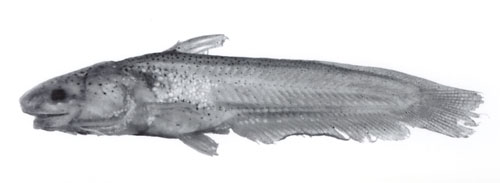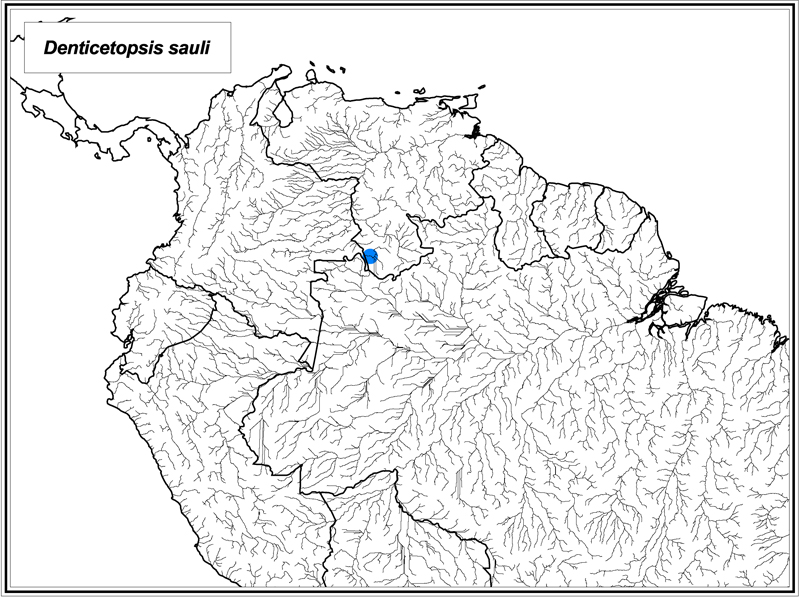
Reproduced from Vari, Ferraris and de Pinna (2005).
Denticetopsis sauli Ferraris, 1996
Identification: Denticetopsis sauli is distinguished from all of its congeners with the exception of D. royeroi by the combination of the possession of elongate, symphyseal teeth on the dentary, a reduced lateral line not extending posteriorly on the body beyond the abdomen, an edentulous vomer, a dorsal fin with only 4 segmented rays and without a spinous first fin ray, an obliquely-truncate margin on the caudal fin, and the lack of horizontally-elongate, stellate, dark chromatophores when the chromatophores are expanded. Denticetopsis sauli is distinguished from D. royeroi by the posterior extent of the margin of the maxilla (extending at least one eye diameter past the posterior margin of the orbit versus extending only slightly beyond the posterior margin of the orbit, respectively), the body depth (17.1-19.5 of SL versus 23% of SL, respectively), and the extent of the membranous connection between the caudal and anal fins (membrane distinctly incised versus without a distinct notch, respectively). Maximum size: 21 mm SL.
Range: Denticetopsis sauli is only known from the Rio Pamoni in the Rio Casiquiare basin of the upper Rio Negro system of Venezuela.
Information from Vari, R. P., C. J. Ferraris Jr. & M. C. C. de Pinna. 2005. The Neotropical whale catfishes (Siluriformes: Cetopsidae: Cetopsinae), a revisionary study. Neotropical Ichthyology 3:127-238.
